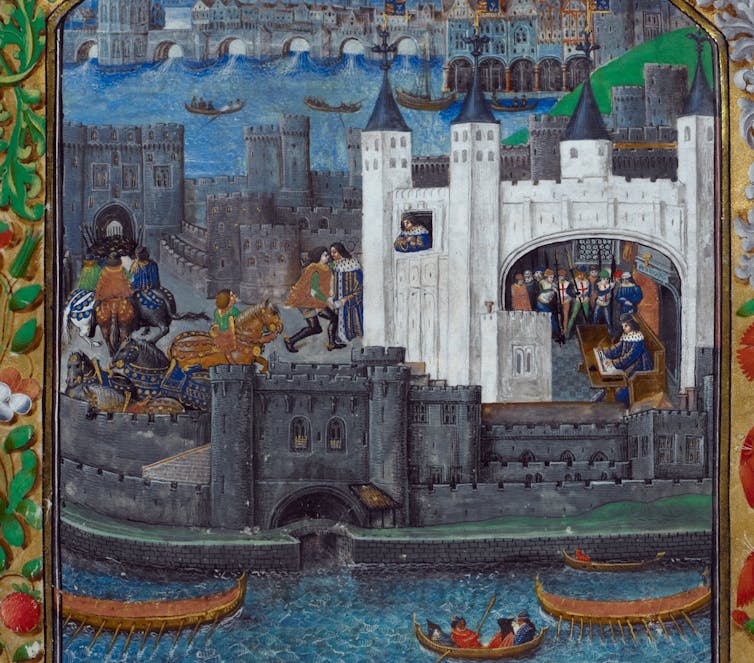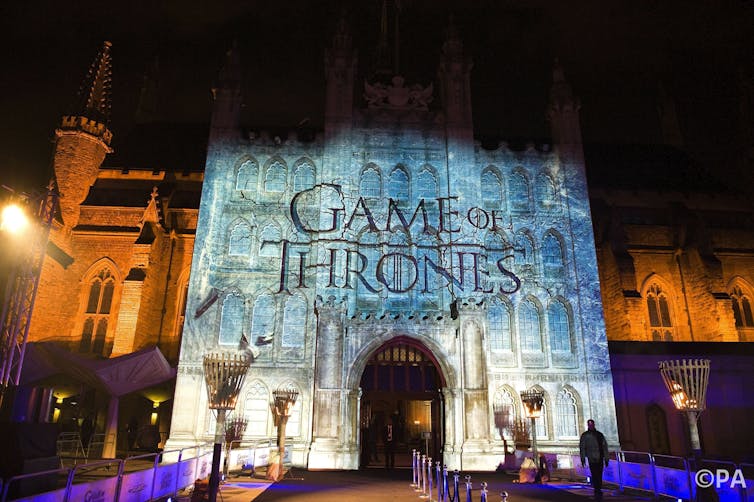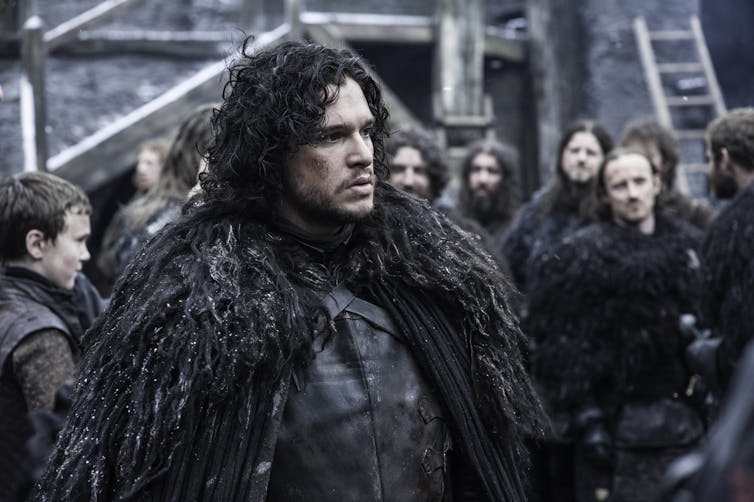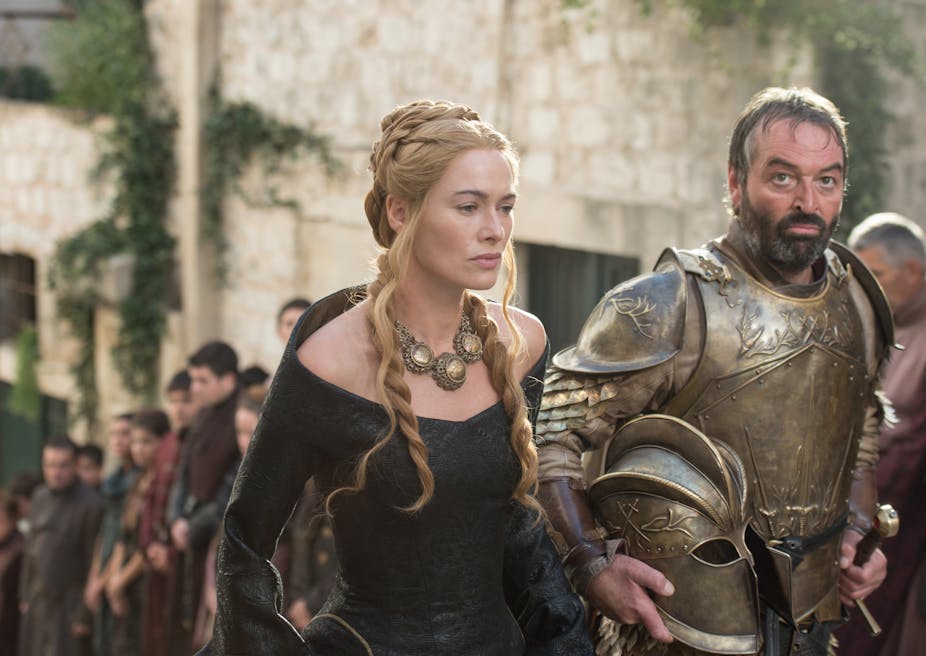The star-studded world premiere of Game of Thrones’s fifth season has taken place – in the UK, at the Tower of London. It’s hard to imagine a more fitting venue for a show based on George R R Martin’s notoriously brutal novels.
Like the fictional Red Keep built by Aegon the Conqueror at Kings Landing after his War of Conquest, William the Conqueror founded London’s iconic fortress to subdue the locals after the Norman Conquest and reinforce his dominance as the new monarch. And 900 years on, the Tower has become synonymous with political intrigue, imprisonment, torture and death – a reputation that stems largely from the late 15th and 16th centuries, when several kings, queens and martyrs were imprisoned, murdered or executed within and around its walls.

During the Wars of the Roses, the medieval conflict that inspired Game of Thrones, King Henry VI was confined in the Tower twice by his dynastic rival, Edward IV. Not unlike Aerys II, the “mad” Targaryen king, who incites Robert Baratheon’s rebellion in the back story to the series, Henry VI’s ineffectual leadership and madness triggered the historic civil war.
A prisoner for more than five years, Henry was murdered at the Tower following the death of his only son and heir at the Battle of Tewkesbury (1471). His execution, like the slaughter of mad king Aerys and his immediate heirs, was followed by a period of relative peace. But when Edward IV died in 1483, political wrangling resumed and the Tower once again provided the backdrop for the next stage of the conflict: the controversial disappearance of Edward’s sons, the “Princes in the Tower”.

Sons and queens
The slaughter or disappearance of young heirs and bastards is also a disturbing and recurring motif in Game of Thrones, resonating with the medieval and Tudor obsession with bloodlines and succession.
Jamie Lannister throws young Bran Stark from a tower at Winterfell to prevent his incestuous affair with Cersei and their illegitimate children being discovered. Theon Greyjoy fakes the murder of Bran and Rickon Stark to secure Winterfell by butchering two proxies. Joffrey orders the Gold Cloaks to massacre Robert Baratheon’s bastards. Rickard Karstark kills Tywin Lannister’s nephews. Craster sacrifices his newborn sons to the White Walkers. All are innocent children, and all fall victim to the morally ambiguous “game” being played by the leading Houses of Westeros.
The prime responsibility of the noblewomen, such as Cersei Lannister, Margery Tyrell and Sansa Stark, is to provide the next generation of kings. They are therefore also at the heart of the political machinations. And here, too, the series draws inspiration from the real medieval and Tudor women associated with the Tower.

In his pursuit of a male heir, Henry VIII famously had his politically sharp consort, Anne Boleyn, imprisoned and executed at the Tower on charges of treason, adultery and incest (the same crimes embraced by Cersei Lannister). This example will be particularly fresh for those who watched the BBC’s Wolf Hall.
Queen of the Roses
Henry VI’s widow, Margaret of Anjou, was likewise incarcerated in the Tower after a decade-long struggle to secure the crown for her son, Prince Edward. A formidable and proud French woman, who married for political purposes, Margaret was unafraid of engaging with the factionalism of her husband’s all-male council. She fought fiercely, if not always astutely, when her son’s birthright came under attack, and made strategic alliances wherever she could – most notably by marrying Prince Edward to the daughter of her former enemy, Richard Neville, earl of Warwick, better known as the “Kingmaker”.
Captured after leading the Lancastrian army against Edward IV at the aforementioned Battle of Tewkesbury, where her son was killed, Margaret avoided her husband’s grim fate and was eventually ransomed, returning to France to live out her days in relative obscurity.

If aspects of Margaret’s story sound familiar it’s because she is one of several resilient historical women who inspired the characterisation of Cersei Lannister. While Cersei’s future is uncertain, we’ve seen her fight to influence and fortify Joffrey’s sovereignty and this season promises to follow her struggle with Margery Tyrell for control of King Tommen, her second son.
Ravens and crows
It’s impossible to avoid a final comparison between the Night’s Watch, or “Crows”, who swear to be “the shield that guards the realms of men” at the Wall, and that other species of the crow genus – the raven – which said to protect the kingdom by its presence at the Tower. According to tradition, if the ravens ever leave, the Tower and the realm will fall.

By the same token, one can’t help wondering what will happen to the Seven Kingdoms if the crows defending the northern frontier are slain, or forced to flee, by the White Walkers. In future seasons, Bran and the mysterious three-eyed raven doubtless have an equally important role to play in the defence of the kingdom.
But for the time being, the imminent series of Games of Thrones will continue to delight and terrify its audience with the same bouts of intrigue, scandal and brutality that have contributed to the Tower’s notorious reputation and popularity.
If winter is coming, then so is more bloodshed, for, as Tower prisoner and martyr Sir Thomas More once said in his account of Richard III’s acquisition of the crown, “king’s games” are “for the more part played upon scaffolds”.

